Miniaturized Low-Frequency Communication System Based on the Magnetoelectric Effect
Abstract
:1. Introduction
2. MMCS Design and Manufacturing
3. Experimental Platform
4. Results
4.1. Receiving Coil Characterization
4.2. Transmitting ME Antenna Experiment
4.3. MMCS Communication Performance Test
4.4. Packaging and Underwater Experiment
5. Conclusions
Author Contributions
Funding
Data Availability Statement
Acknowledgments
Conflicts of Interest
References
- Natgunanathan, I.; Fernando, N.; Loke, S.W.; Weerasuriya, C. Bluetooth Low Energy Mesh: Applications, Considerations and Current State-of-the-Art. Sensors 2023, 23, 1826. [Google Scholar] [CrossRef]
- Eras, L.; Domínguez, F.; Martinez, C. Viability characterization of a proof-of-concept Bluetooth mesh smart building application. Int. J. Distrib. Sens. Netw. 2022, 18, 15501329221097819. [Google Scholar] [CrossRef]
- Liu, F.; Liu, J.; Yin, Y.; Wang, W.; Hu, D.; Chen, P.; Niu, Q. Survey on WiFi-based indoor positioning techniques. IET Commun. 2020, 14, 1372–1383. [Google Scholar] [CrossRef]
- Devi, D.H.; Duraisamy, K.; Armghan, A.; Alsharari, M.; Aliqab, K.; Sorathiya, V.; Das, S.; Rashid, N. 5G Technology in Healthcare and Wearable Devices: A Review. Sensors 2023, 23, 2519. [Google Scholar] [CrossRef] [PubMed]
- Kakkavas, G.; Diamanti, M.; Stamou, A.; Karyotis, V.; Bouali, F.; Pinola, J.; Apilo, O.; Papavassiliou, S.; Moessner, K. Design, Development, and Evaluation of 5G-Enabled Vehicular Services: The 5G-HEART Perspective. Sensors 2022, 22, 426. [Google Scholar] [CrossRef] [PubMed]
- Simpson, J.J.; Heikes, R.P.; Taflove, A. FDTD Modeling of a Novel ELF Radar for Major Oil Deposits Using a Three-Dimensional Geodesic Grid of the Earth-Ionosphere Waveguide. IEEE Trans. Antennas Propag. 2006, 54, 1734–1741. [Google Scholar] [CrossRef]
- Lunkenheimer, P.; Emmert, S.; Gulich, R.; Kohler, M.; Wolf, M.; Schwab, M.; Loidl, A. Electromagnetic-radiation absorption by water. Phys. Rev. E 2017, 96, 062607. [Google Scholar] [CrossRef]
- Anagnostou, D.E.; Papapolymerou, J.; Tentzeris, M.M.; Christodoulou, C.G. A Printed Log-Periodic Koch-Dipole Array (LPKDA). IEEE Antennas Wirel. Propag. Lett. 2008, 7, 456–460. [Google Scholar] [CrossRef]
- Mehdipour, A.; Mohammadpour-Aghdam, K.; Faraji-Dana, R. Complete dispersion analysis of Vivaldi antenna for ultra wideband applications. Prog. Electromagn. Res. 2007, 77, 85–96. [Google Scholar] [CrossRef]
- Alibakhshi-Kenari, M.; Movahhedi, M.; Naderian, H. A new miniature ultra wide band planar microstrip antenna based on the metamaterial transmission line. In Proceedings of the 2012 IEEE APACE, Melaka, Malaysia, 11–13 December 2012; pp. 293–297. [Google Scholar] [CrossRef]
- Alibakhshikenari, M.; Virdee, B.S.; See, C.H.; Abd-Alhameed, R.A.; Falcone, F.; Limiti, E. Super-Wide Impedance Bandwidth Planar Antenna for Microwave and Millimeter-Wave Applications. Sensors 2019, 19, 2306. [Google Scholar] [CrossRef]
- Alibakhshi-Kenari, M.; Andújar, A.; Anguera, J. New compact printed leaky-wave antenna with beam steering. Microw. Opt. Technol. Lett. 2016, 58, 215–217. [Google Scholar] [CrossRef]
- Alibakhshikenari, M.; Virdee, B.S.; See, C.H.; Shukla, P.; Moghaddam, S.M.; Zaman, A.U.; Shafqaat, S.; Akinsolu, M.O.; Liu, B.; Yang, J.; et al. Dual-Polarized Highly Folded Bowtie Antenna With Slotted Self-Grounded Structure for Sub-6 GHz 5G Applications. IEEE Trans. Antennas Propag. 2022, 70, 3028–3033. [Google Scholar] [CrossRef]
- Cui, Y.; Wu, M.; Song, X.; Huang, Y.-P.; Jia, Q.; Tao, Y.-F.; Wang, C. Research progress of small low-frequency transmitting antenna. Acta Phys. Sin. 2020, 69, 208401. [Google Scholar] [CrossRef]
- McLean, J.S. A re-examination of the fundamental limits on the radiation Q of electrically small antennas. IEEE Trans. Antennas Propag. 1996, 44, 672–676. [Google Scholar] [CrossRef]
- Cui, Y.; Wu, M.; Li, Z.; Song, X.; Wang, C.; Yuan, H.; Yang, Z.X.; Zhong, J. A miniaturized mechanical antenna based on FEP/THV unipolar electrets for extremely low-frequency transmission. Microsyst. Nanoeng. 2022, 8, 58. [Google Scholar] [CrossRef] [PubMed]
- Wang, S.; Yang, J.; Lu, P.; Yang, S.; Guo, L.; Hao, Y.; Huang, K.; Xu, J. Speech Communication System Based on Piezoelectric Electret Mechanical Antenna. Appl. Sci. 2023, 13, 2332. [Google Scholar] [CrossRef]
- Burch, H.C.; Garraud, A.; Mitchell, M.F.; Moore, R.C.; Arnold, D.P. Experimental Generation of ELF Radio Signals Using a Rotating Magnet. IEEE Trans. Antennas Propag. 2018, 66, 6265–6272. [Google Scholar] [CrossRef]
- Kemp, M.A.; Franzi, M.; Haase, A.; Jongewaard, E.; Whittaker, M.T.; Kirkpatrick, M.; Sparr, R. A high Q piezoelectric resonator as a portable VLF transmitter. Nat. Commun. 2019, 10, 1715. [Google Scholar] [CrossRef]
- Das, D.; Nasrollahpour, M.; Xu, Z.; Zaeimbashi, M.; Martos-Repath, I.; Mittal, A.; Khalifa, A.; Cash, S.S.; Shrivastava, A.; Sun, N.X.; et al. A Radio Frequency Magnetoelectric Antenna Prototyping Platform for Neural Activity Monitoring Devices with Sensing and Energy Harvesting Capabilities. Electronics 2020, 9, 2123. [Google Scholar] [CrossRef]
- Zaeimbashi, M.; Nasrollahpour, M.; Khalifa, A.; Romano, A.; Liang, X.; Chen, H.; Sun, N.; Matyushov, A.; Lin, H.; Dong, C.; et al. Ultra-compact dual-band smart NEMS magnetoelectric antennas for simultaneous wireless energy harvesting and magnetic field sensing. Nat. Commun. 2021, 12, 3141. [Google Scholar] [CrossRef]
- Wang, Y.; Ma, Z.; Fu, G.; Wang, J.; Xi, Q.; Wang, Y.; Jia, Z.; Zi, G. A Low-Frequency MEMS Magnetoelectric Antenna Based on Mechanical Resonance. Micromachines 2022, 13, 864. [Google Scholar] [CrossRef] [PubMed]
- Lou, J.; Reed, D.; Liu, M.; Sun, N.X. Electrostatically tunable magnetoelectric inductors with large inductance tunability. Appl. Phys. Lett. 2009, 94, 112508. [Google Scholar] [CrossRef]
- Suntrup, D.J.; Gupta, G.; Li, H.; Keller, S.; Mishra, U.K. Barrier height fluctuations in InGaN polarization dipole diodes. Appl. Phys. Lett. 2015, 107, 173503. [Google Scholar] [CrossRef]
- Peng, R.-C.; Wang, J.J.; Hu, J.-M.; Chen, L.-Q.; Nan, C.-W. Electric-field-driven magnetization reversal in square-shaped nanomagnet-based multiferroic heterostructure. Appl. Phys. Lett. 2015, 106, 142901. [Google Scholar] [CrossRef]
- Dong, S.; Zhai, J.; Li, J.F.; Viehland, D.; Priya, S. Multimodal system for harvesting magnetic and mechanical energy. Appl. Phys. Lett. 2008, 93, 103511. [Google Scholar] [CrossRef]
- Zhang, J.; Li, P.; Wen, Y.; He, W.; Yang, A.; Lu, C.; Qiu, J.; Wen, J.; Yang, J.; Zhu, Y.; et al. High-resolution current sensor utilizing nanocrystalline alloy and magnetoelectric laminate composite. Rev. Sci. Instrum. 2012, 83, 115001. [Google Scholar] [CrossRef]
- Nan, T.; Lin, H.; Gao, Y.; Matyushov, A.; Yu, G.; Chen, H.; Sun, N.; Wei, S.; Wang, Z.; Li, M.; et al. Acoustically actuated ultra-compact NEMS magnetoelectric antennas. Nat. Commun. 2017, 8, 296. [Google Scholar] [CrossRef]
- Dong, C.; He, Y.; Li, M.; Tu, C.; Chu, Z.; Liang, X.; Chen, H.; Wei, Y.; Zaeimbashi, M.; Wang, X.; et al. A Portable Very Low-frequency (VLF) Communication System Based on Acoustically Actuated Magnetoelectric Antennas. IEEE Antennas Wirel. Propag. Lett. 2020, 19, 398–402. [Google Scholar] [CrossRef]
- Xu, G.; Xiao, S.; Li, Y.; Zhu, X.; Luo, H.; Long, Y. Near-field coupling and wireless signal transmission using a magnetoelectric laminated composite antenna. Phys. Lett. A 2022, 456, 128551. [Google Scholar] [CrossRef]
- Hu, L.; Zhang, Q.; Wu, H.; You, H.; Jiao, J.; Luo, H.; Wang, Y.; Duan, C.; Gao, A. A very low-frequency (VLF) antenna based on clamped bending-mode structure magnetoelectric laminates. J. Phys. Condens. Matter 2022, 34, 414002. [Google Scholar] [CrossRef]
- Hwang, G.T.; Palneedi, H.; Jung, B.M.; Kwon, S.J.; Peddigari, M.; Min, Y.; Kim, J.W.; Ahn, C.W.; Choi, J.J.; Hahn, B.D.; et al. Enhancement of Magnetoelectric Conversion Achieved by Optimization of Interfacial Adhesion Layer in Laminate Composites. ACS Appl. Mater. Interfaces 2018, 10, 32323–32330. [Google Scholar] [CrossRef] [PubMed]
- Zhuang, X.; Leung, C.M.; Li, J.; Srinivasan, G.; Viehland, D. Power Conversion Efficiency and Equivalent Input Loss Factor in Magnetoelectric Gyrators. IEEE Trans. Ind. Electron. 2019, 66, 2499–2505. [Google Scholar] [CrossRef]
- Niu, Y.; Ren, H. A miniaturized low-frequency (LF) magnetoelectric receiving antenna with an integrated DC magnetic bias. Appl. Phys. Lett. 2021, 118, 264104. [Google Scholar] [CrossRef]
- Niu, Y.; Ren, H. Transceiving Signals by Mechanical Resonance: A Miniaturized Standalone Low-frequency (LF) Magnetoelectric Mechanical Antenna Pair With Integrated DC Magnetic Bias. IEEE Sens. J. 2022, 22, 14008–14017. [Google Scholar] [CrossRef]
- Xu, J.; Leung, C.M.; Zhuang, X.; Li, J.; Bhardwaj, S.; Volakis, J.; Viehland, D. A Low Frequency Mechanical Transmitter Based on Magnetoelectric Heterostructures Operated at Their Resonance Frequency. Sensors 2019, 19, 853. [Google Scholar] [CrossRef] [PubMed]
- Zhang, Y.; Jing, L.; Shi, P.; Hou, J.; Yang, X.; Peng, Y.; Chen, S. Research on a miniaturized VLF antenna array based on a magnetoelectric heterojunction. J. Mater. Sci. Mater. Electron. 2022, 33, 4211–4224. [Google Scholar] [CrossRef]
- Zhai, J.; Xing, Z.; Dong, S.; Li, J.; Viehland, D. Magnetoelectric Laminate Composites: An Overview. J. Am. Ceram. Soc. 2008, 91, 351–358. [Google Scholar] [CrossRef]
- Xu, G.K.; Xiao, S.Q.; Li, Y.; Wang, B.Z. Modeling of electromagnetic radiation-induced from a magnetostrictive/piezoelectric laminated composite. Phys. Lett. A 2021, 385, 126959. [Google Scholar] [CrossRef]
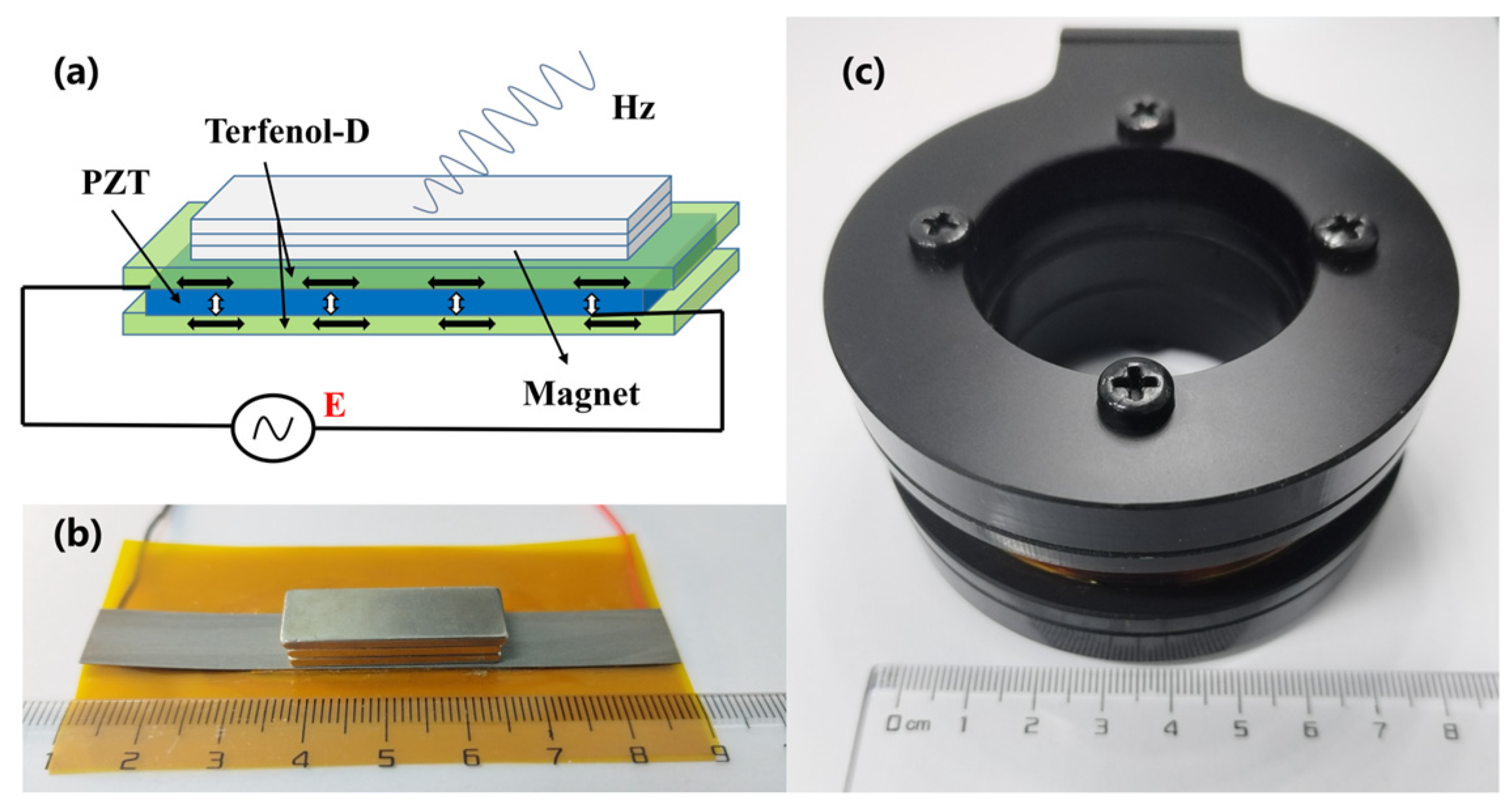
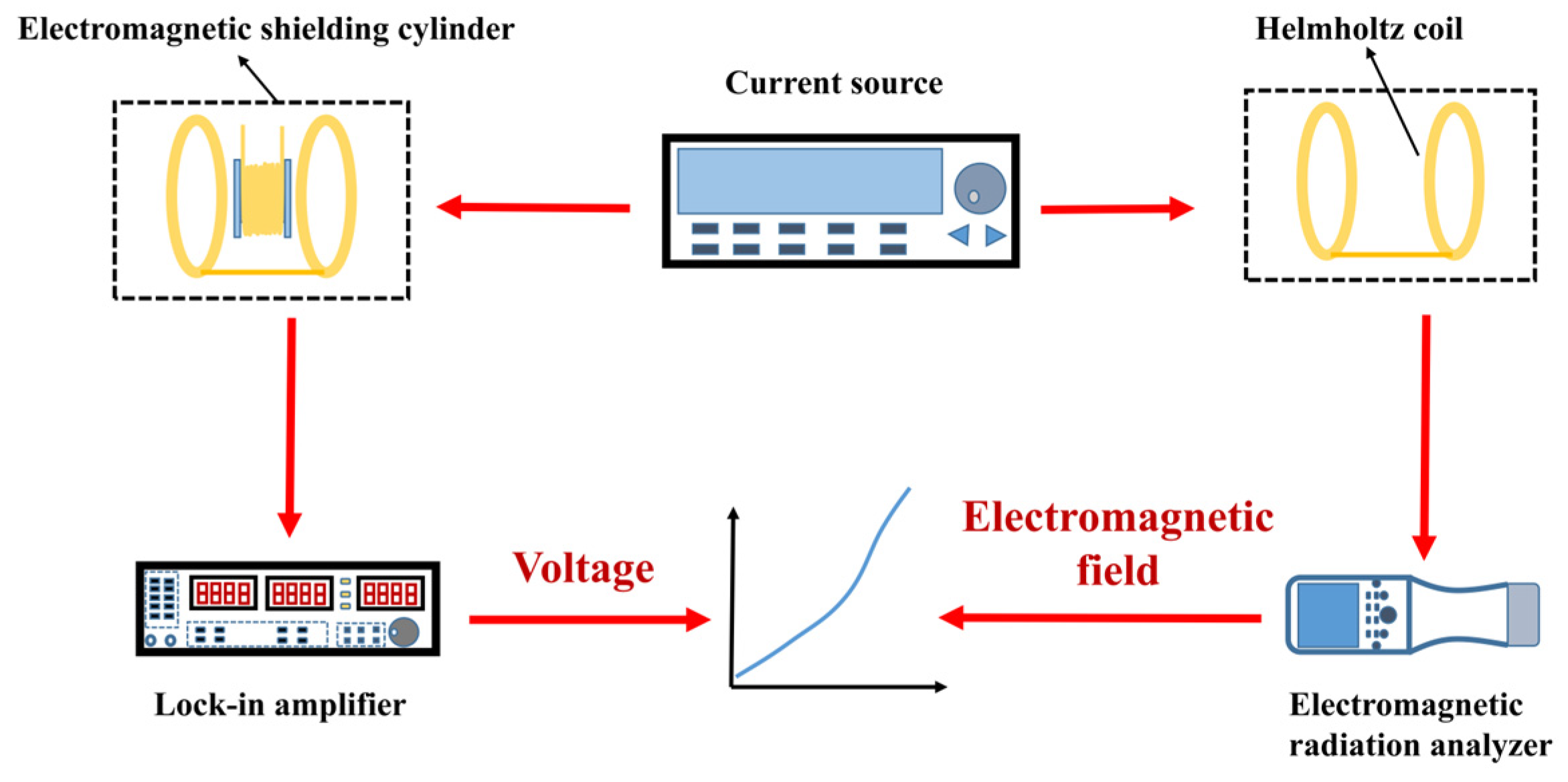

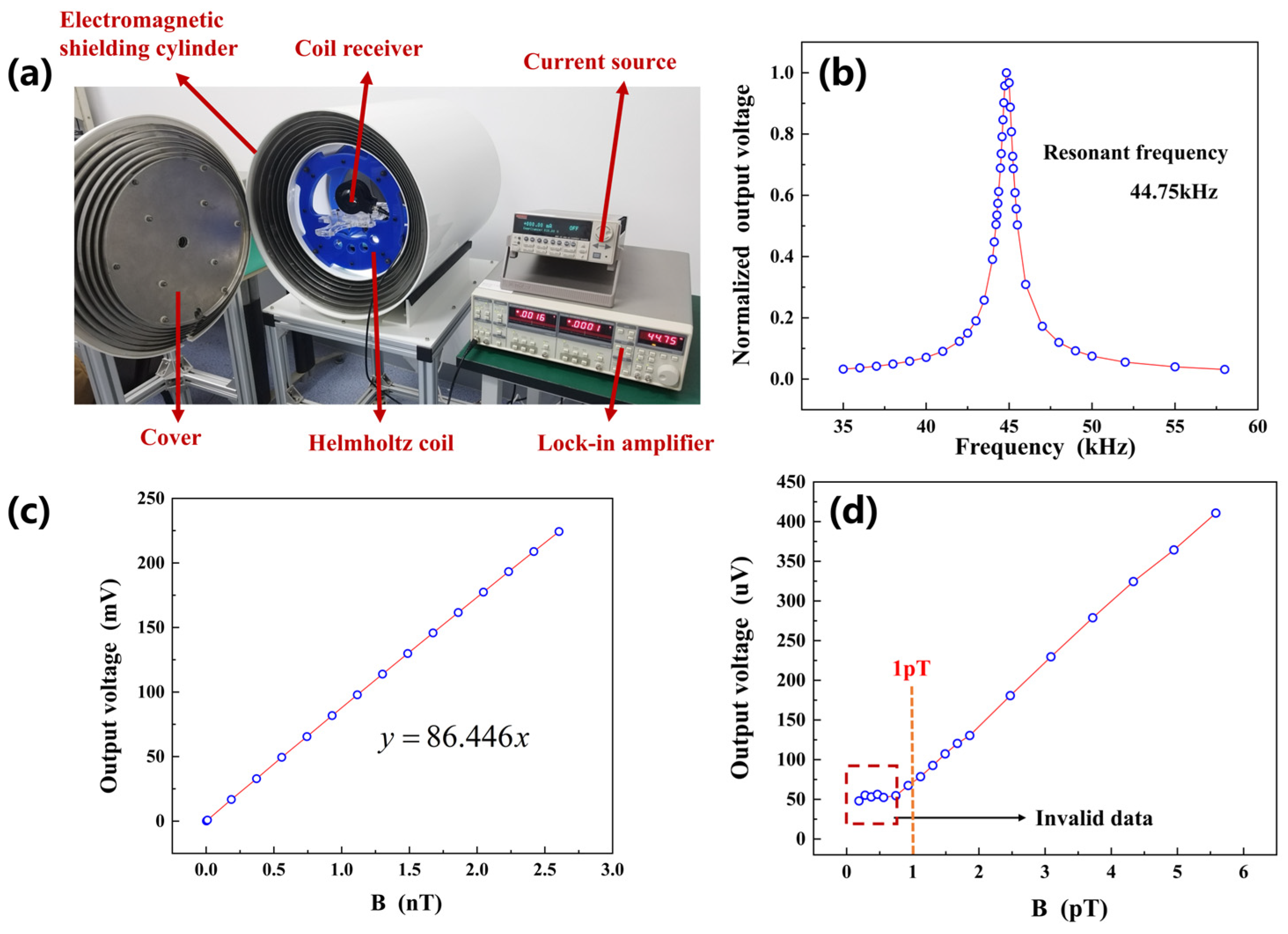
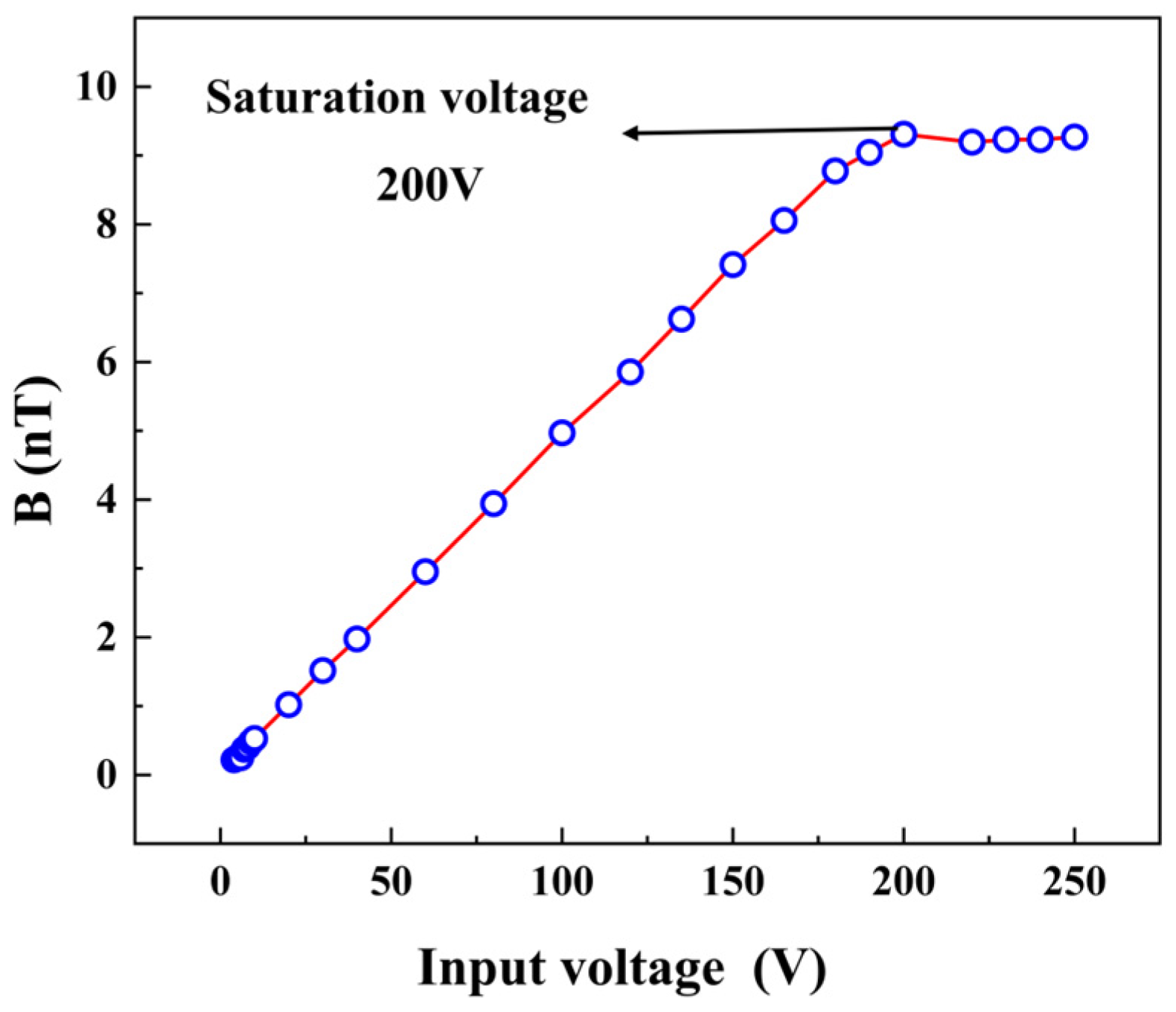
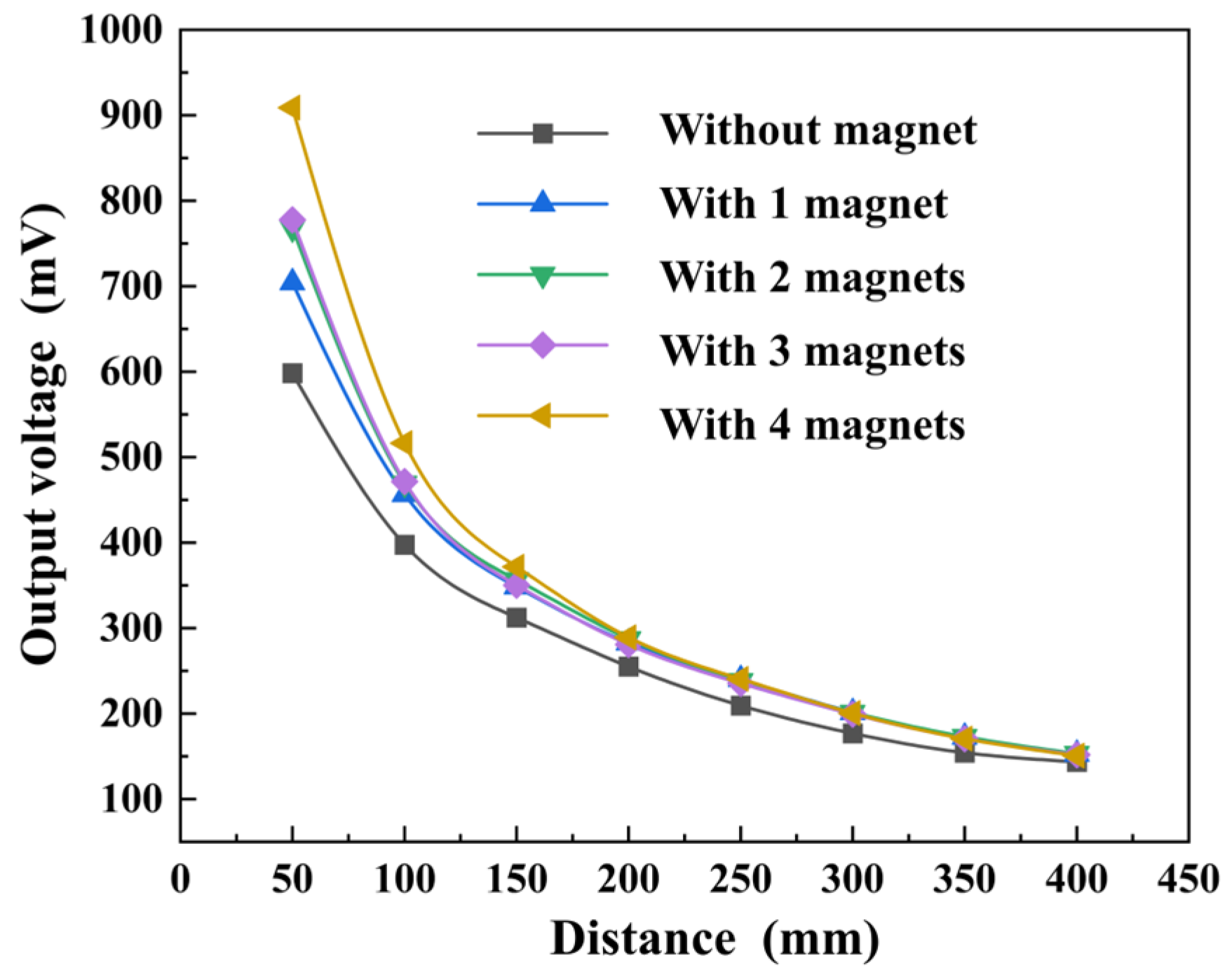
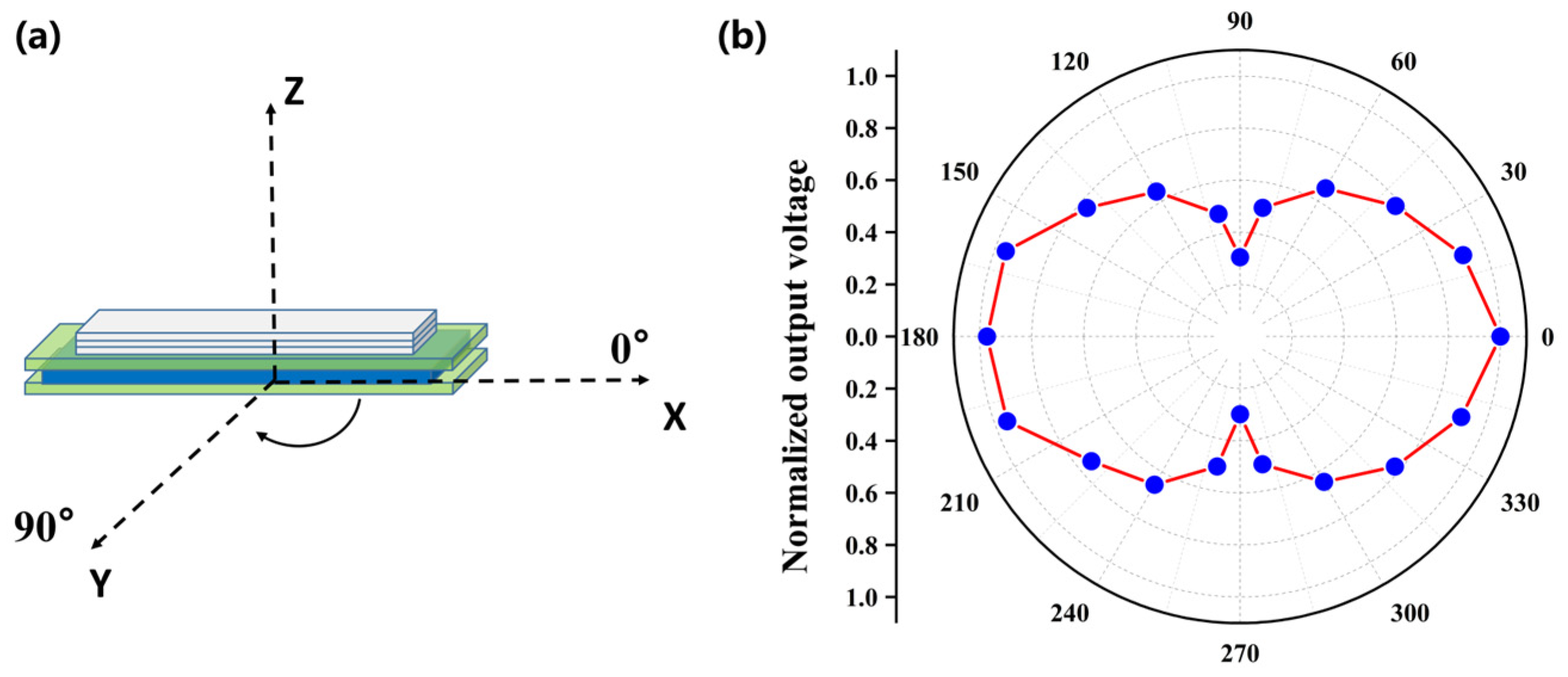
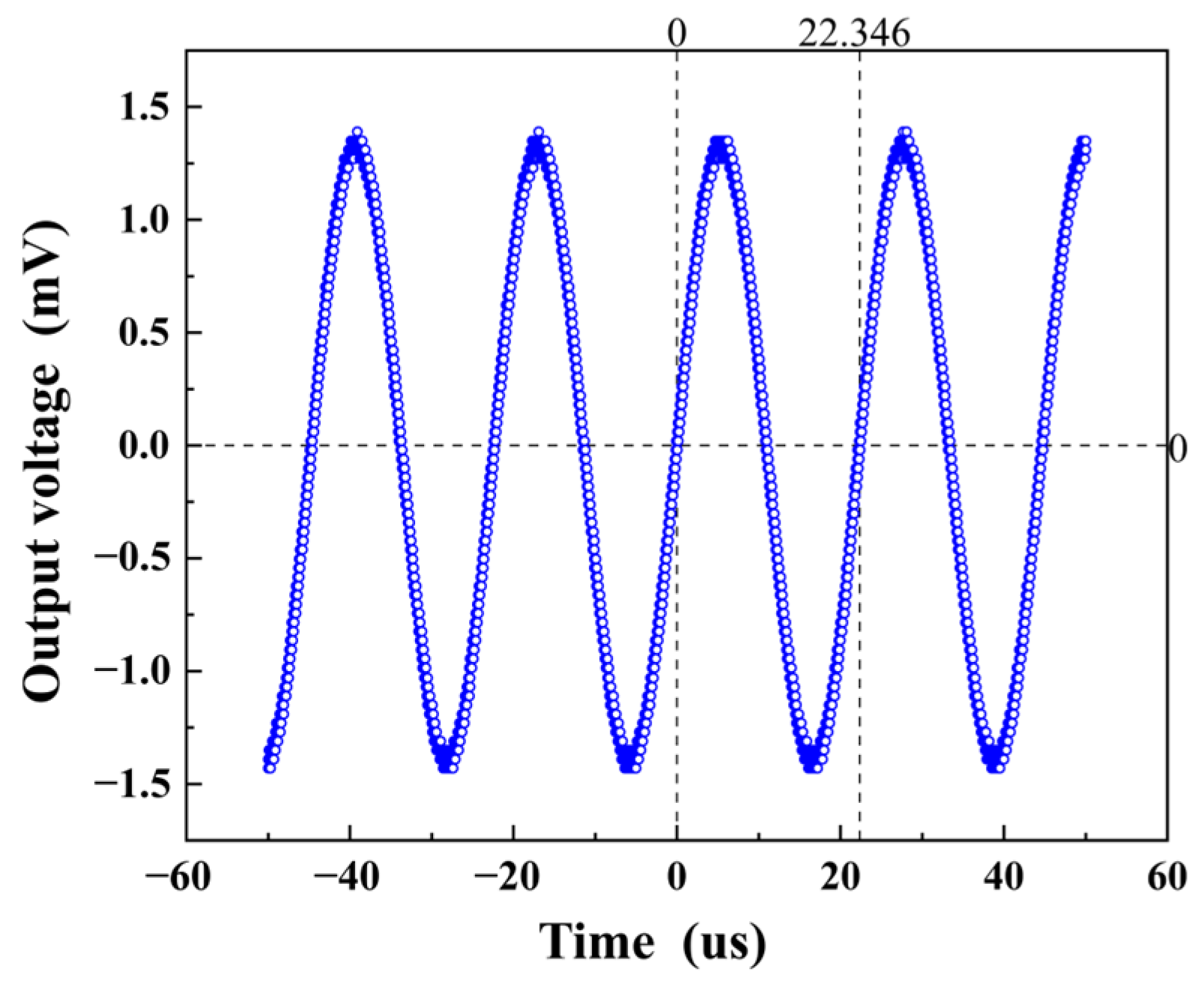




Disclaimer/Publisher’s Note: The statements, opinions and data contained in all publications are solely those of the individual author(s) and contributor(s) and not of MDPI and/or the editor(s). MDPI and/or the editor(s) disclaim responsibility for any injury to people or property resulting from any ideas, methods, instructions or products referred to in the content. |
© 2023 by the authors. Licensee MDPI, Basel, Switzerland. This article is an open access article distributed under the terms and conditions of the Creative Commons Attribution (CC BY) license (https://creativecommons.org/licenses/by/4.0/).
Share and Cite
Zi, G.; Ma, Z.; Wang, Y.; Wang, Y.; Jia, Z.; Zhao, S.; Huang, D.; Wang, T. Miniaturized Low-Frequency Communication System Based on the Magnetoelectric Effect. Micromachines 2023, 14, 1830. https://doi.org/10.3390/mi14101830
Zi G, Ma Z, Wang Y, Wang Y, Jia Z, Zhao S, Huang D, Wang T. Miniaturized Low-Frequency Communication System Based on the Magnetoelectric Effect. Micromachines. 2023; 14(10):1830. https://doi.org/10.3390/mi14101830
Chicago/Turabian StyleZi, Guohao, Zhibo Ma, Yinan Wang, Yuanhang Wang, Ziqiang Jia, Shanlin Zhao, Dishu Huang, and Tao Wang. 2023. "Miniaturized Low-Frequency Communication System Based on the Magnetoelectric Effect" Micromachines 14, no. 10: 1830. https://doi.org/10.3390/mi14101830
APA StyleZi, G., Ma, Z., Wang, Y., Wang, Y., Jia, Z., Zhao, S., Huang, D., & Wang, T. (2023). Miniaturized Low-Frequency Communication System Based on the Magnetoelectric Effect. Micromachines, 14(10), 1830. https://doi.org/10.3390/mi14101830







